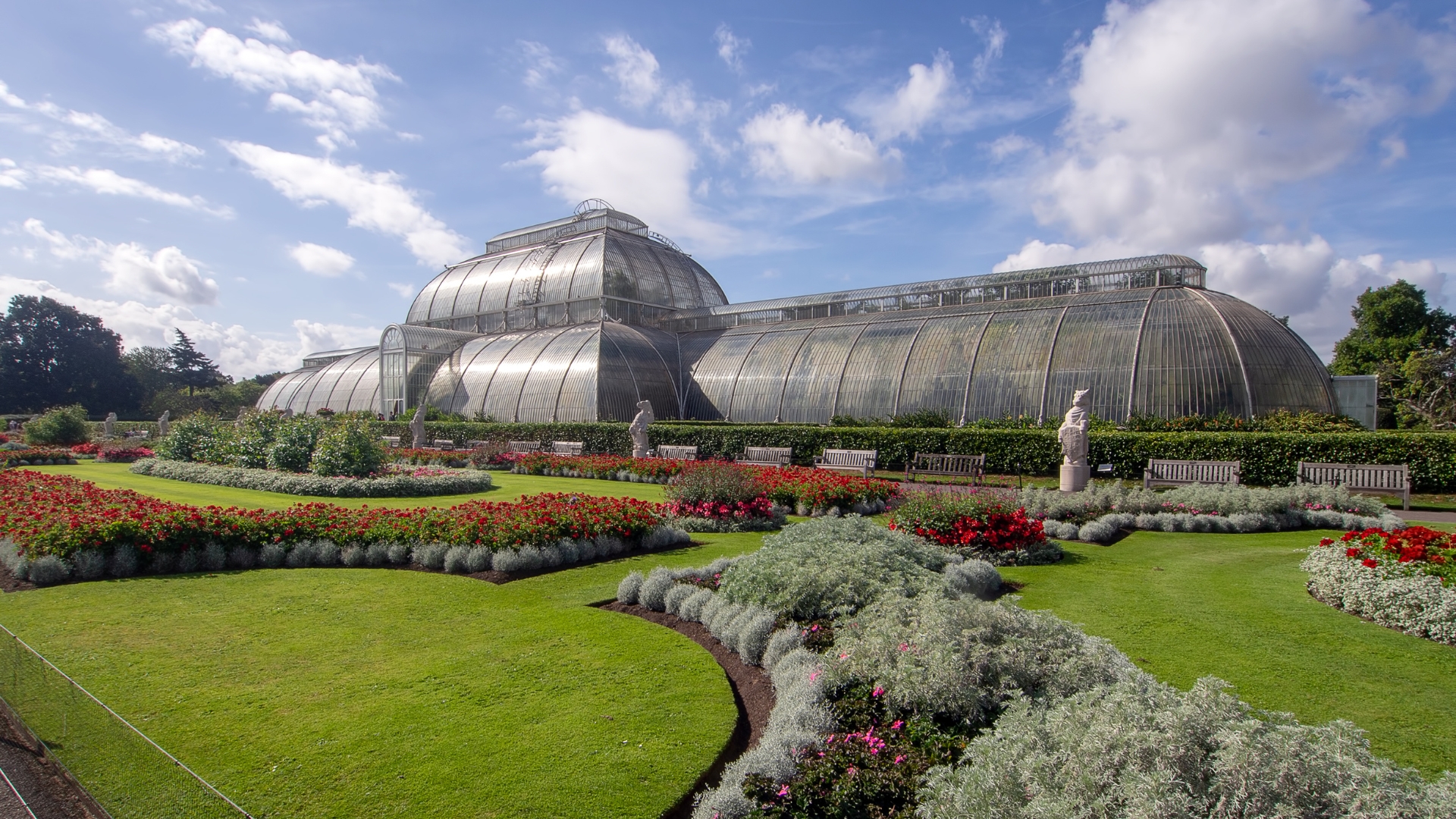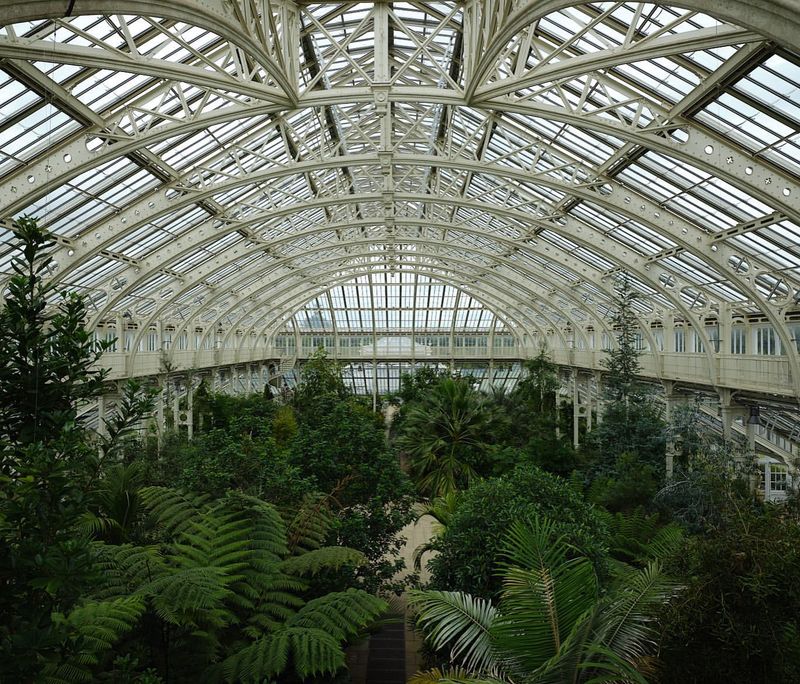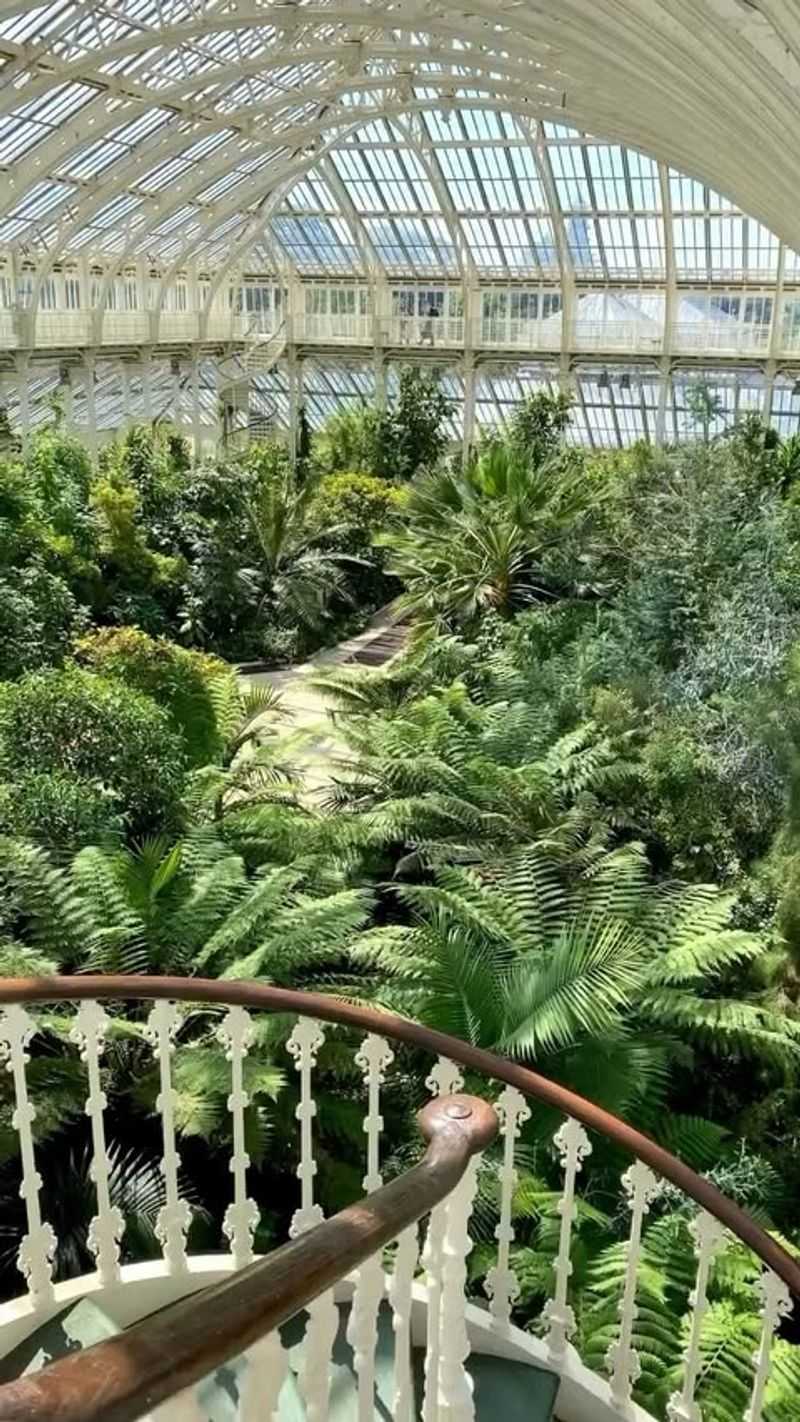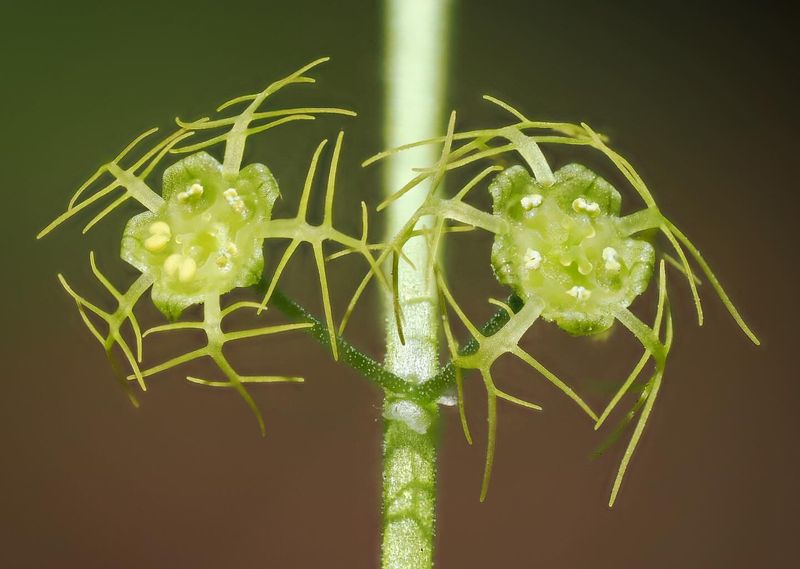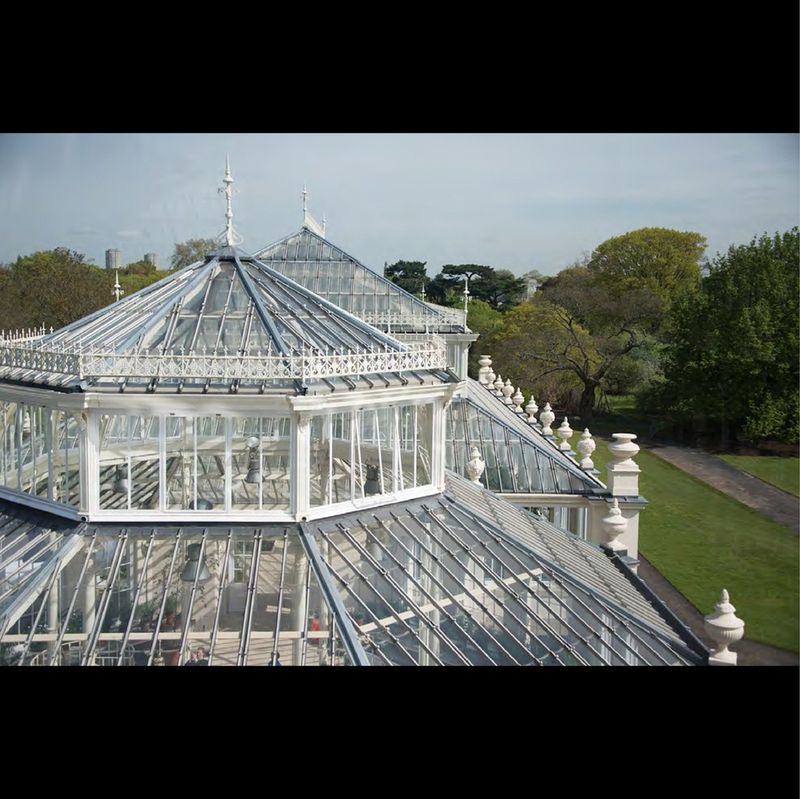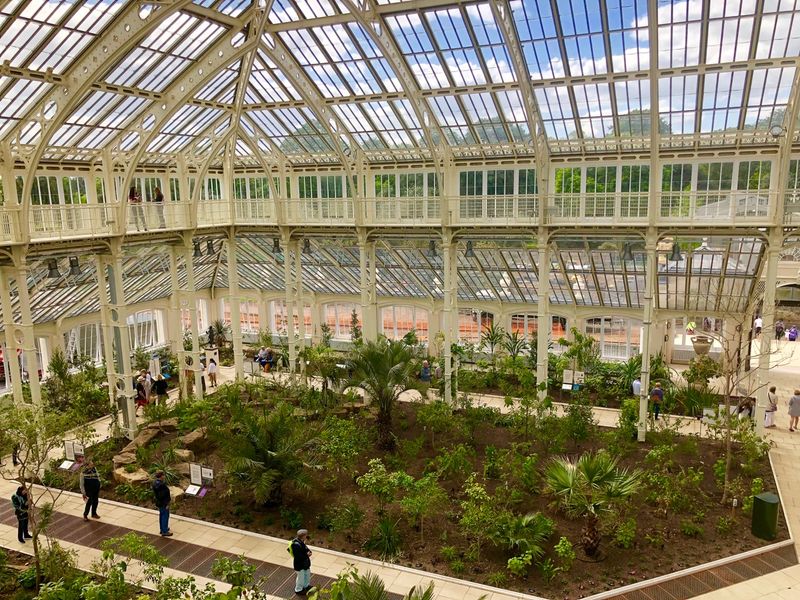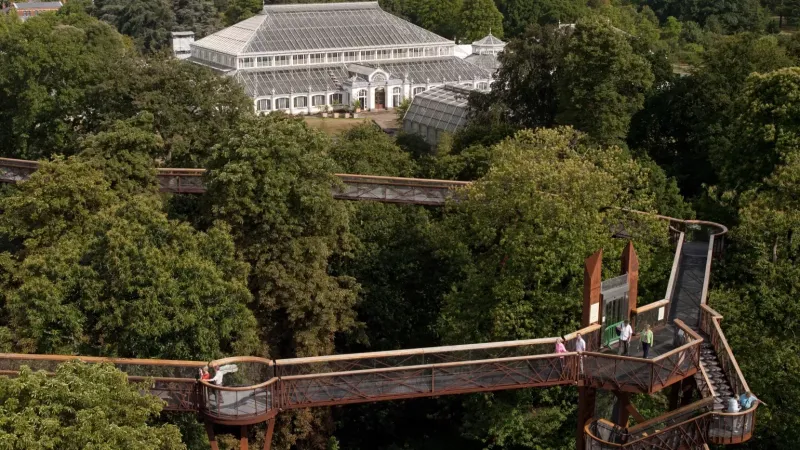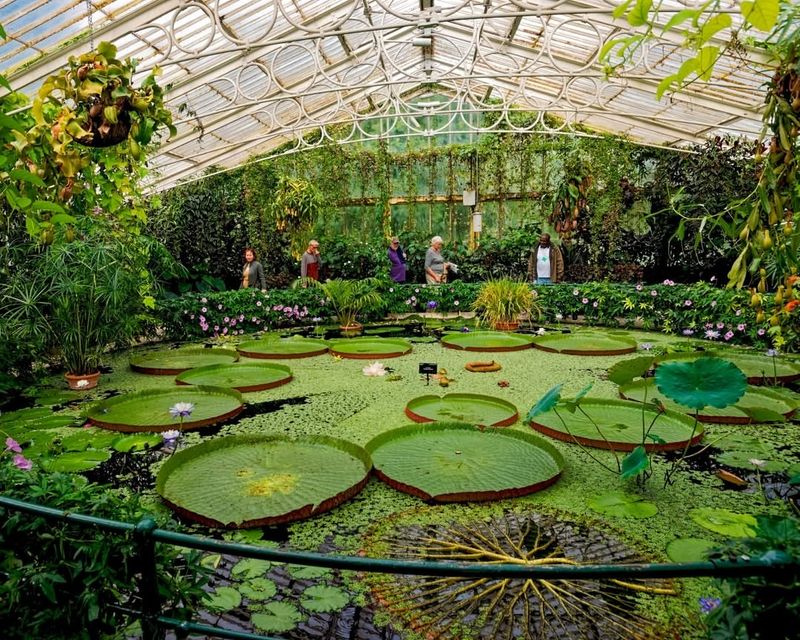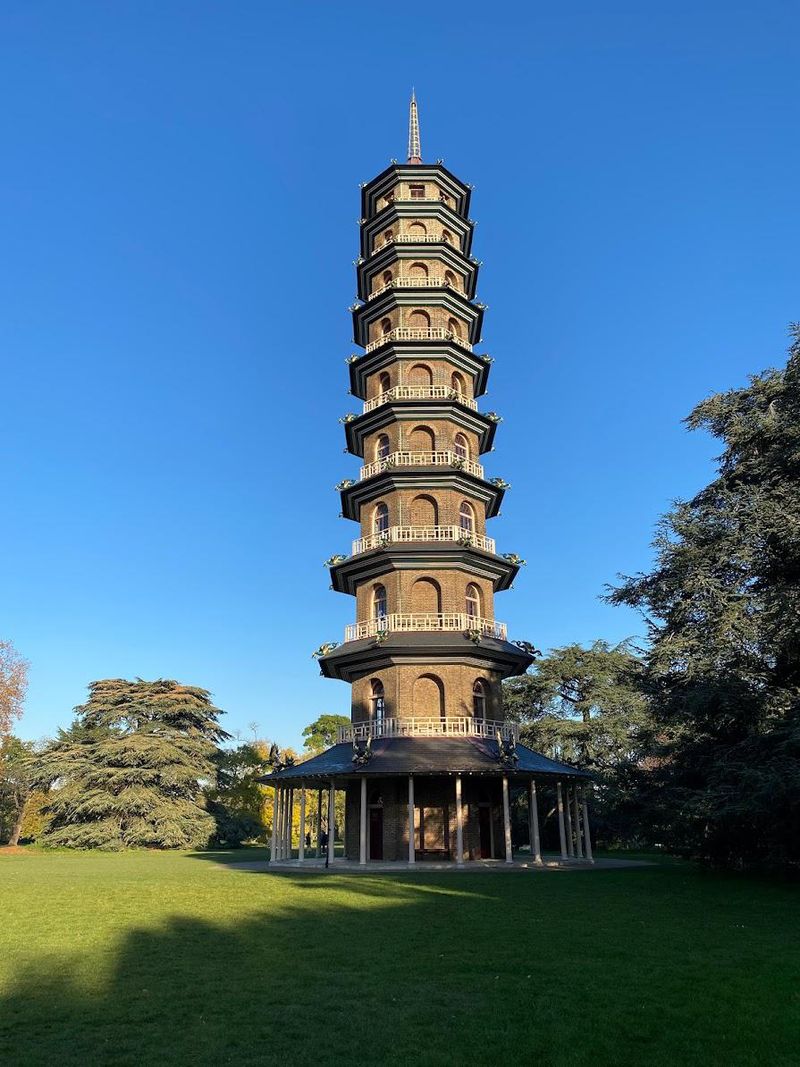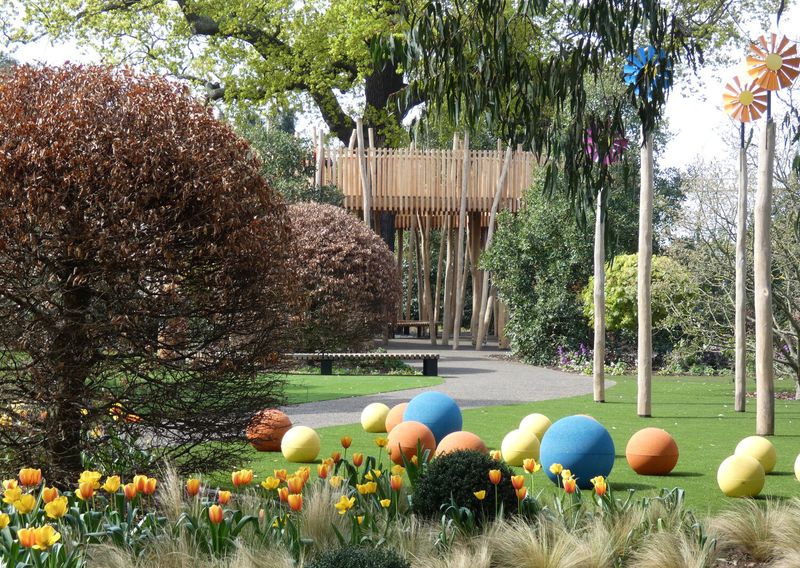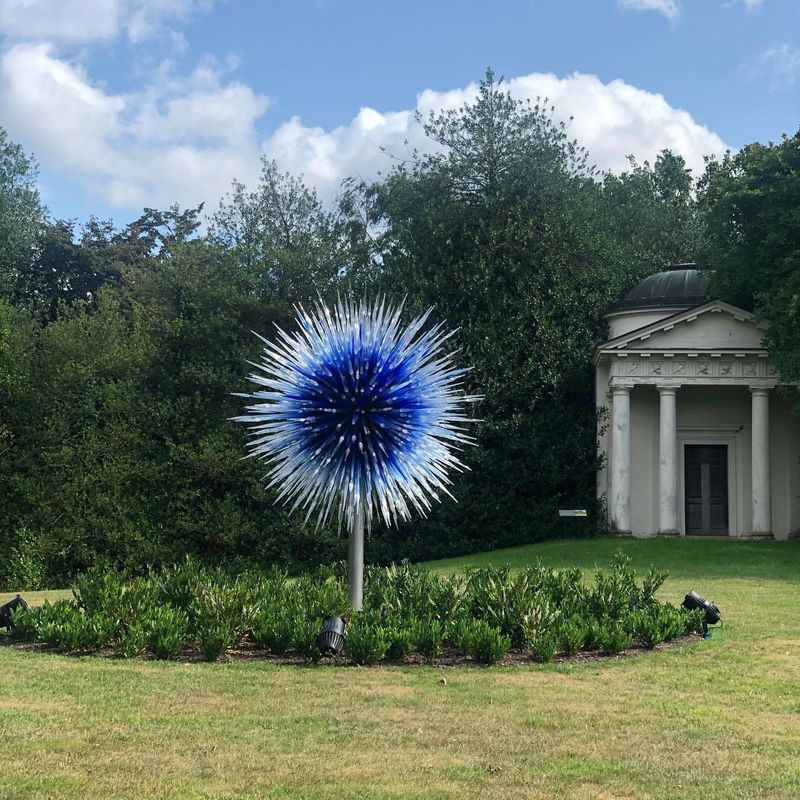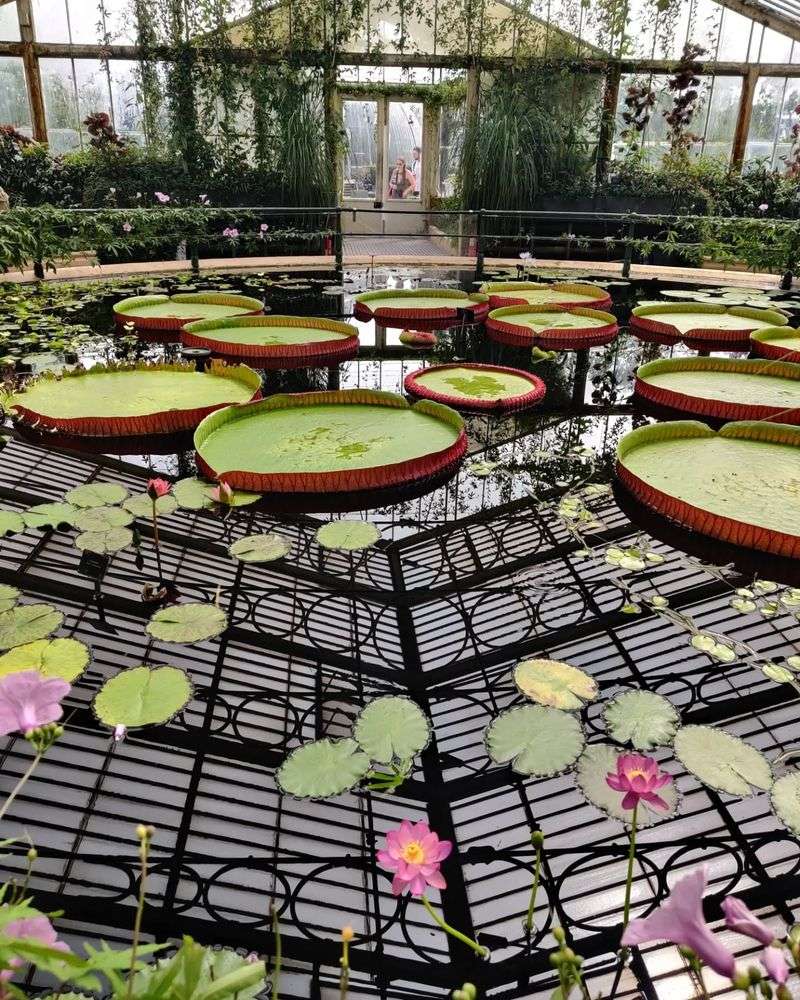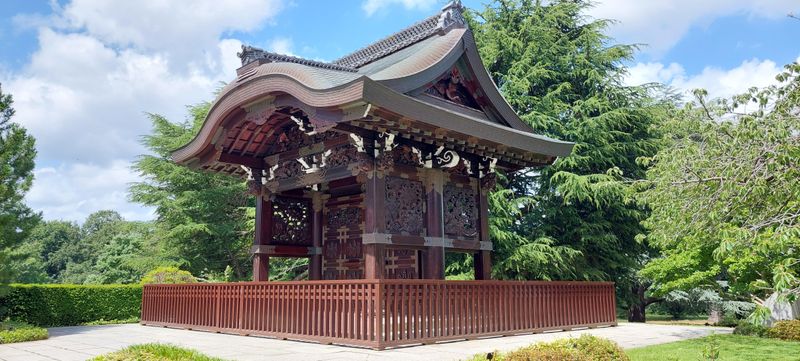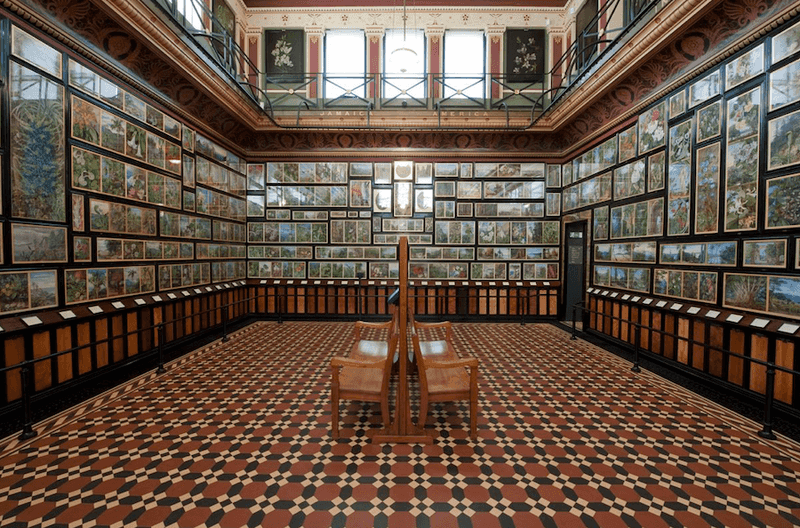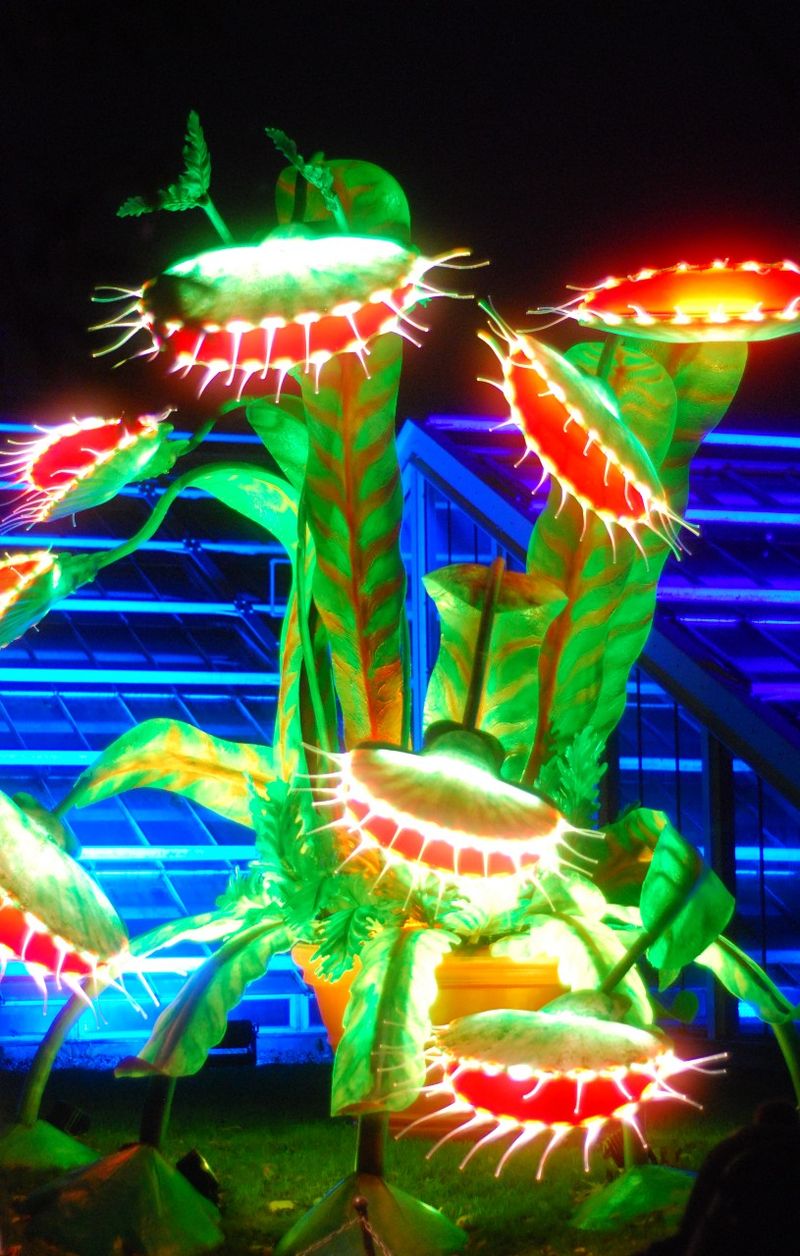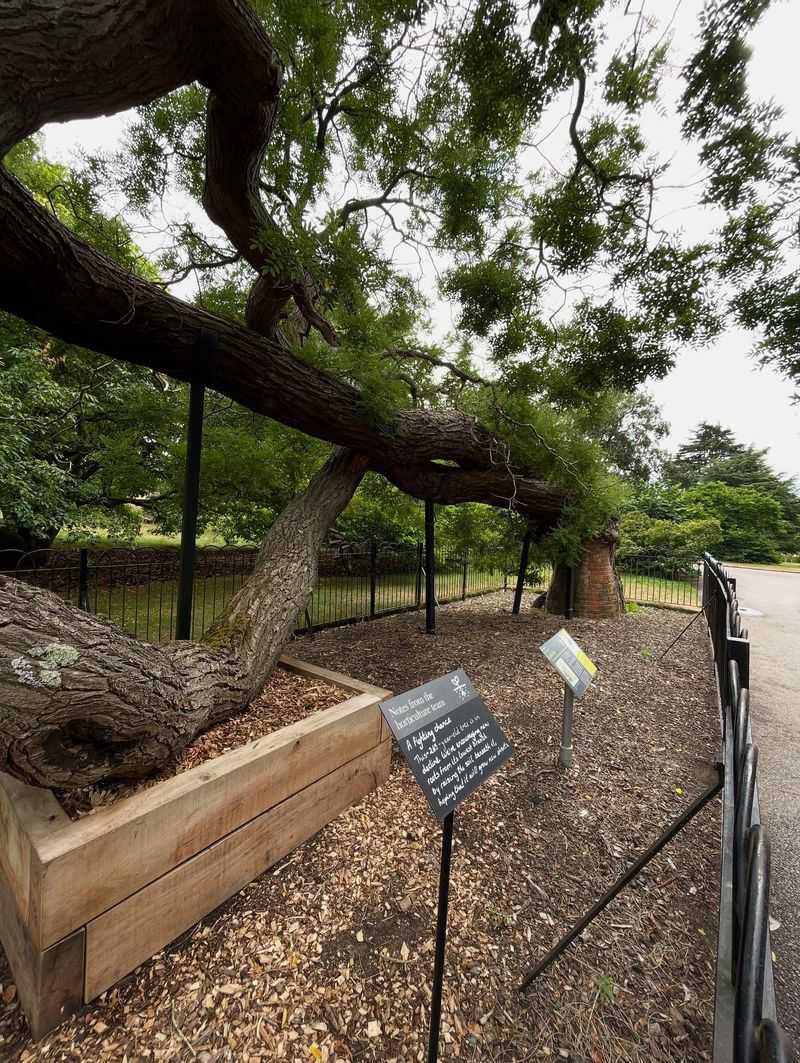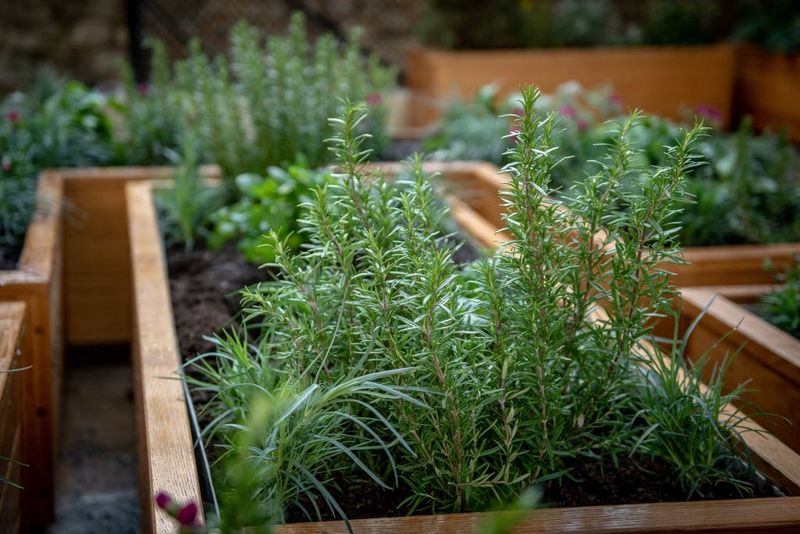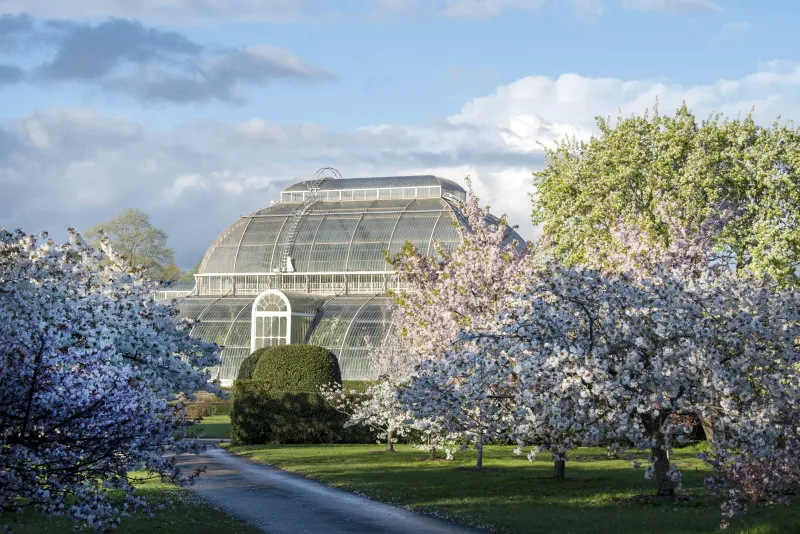Nestled in southwest London, Kew Gardens stands as one of the world’s most extraordinary botanical treasures. Since 1759, this living museum has preserved rare plant species, conducted groundbreaking research, and created breathtaking landscapes for visitors to enjoy.
Today’s revitalized Kew combines centuries of botanical tradition with modern conservation efforts, making it both a scientific powerhouse and a magical escape from urban life.
1. Royal Roots Run Deep
Princess Augusta started Kew Gardens in 1759 as a modest nine-acre garden. Her son, King George III, later expanded it with help from renowned landscape architects like Capability Brown.
The royal connection continued for generations, with each monarch adding their own touch to the gardens. Queen Victoria officially opened Kew to the public in 1840, transforming a private royal retreat into a national treasure that everyone could enjoy.
2. UNESCO World Heritage Recognition
Kew Gardens achieved UNESCO World Heritage status in 2003, joining an elite group of cultural landmarks. The designation recognizes not just its beauty, but its significant contributions to botanical science and conservation throughout history.
Visitors from around the world now walk the same paths as generations of botanists, explorers, and royalty. The UNESCO status helps protect Kew’s collections and historic buildings for future generations to study and enjoy.
3. Palm House: Victorian Engineering Marvel
The Palm House stands as a breathtaking example of Victorian engineering brilliance. Completed in 1848, its curved glass and wrought iron structure was revolutionary for its time, creating a tropical paradise in chilly London.
Inside, visitors experience a humid rainforest climate where rare palms and tropical plants thrive. The building’s recent restoration returned it to its original glory, cleaning decades of pollution from its gleaming surfaces while preserving its historic character.
4. Temperate House Rebirth
After a massive five-year, £41 million renovation completed in 2018, the Temperate House reopened as the crown jewel of Kew’s revitalization. Workers painstakingly dismantled, repaired, and reassembled over 69,000 individual elements of this Victorian masterpiece.
Now housing 10,000 plants from temperate regions worldwide, it protects species threatened by climate change and habitat loss. The restoration preserved the building’s historic character while incorporating modern sustainability features like energy-efficient climate controls.
5. Botanical Rescue Missions
Kew’s scientists travel to the world’s most remote regions collecting seeds from plants facing extinction. These botanical Indiana Joneses have sometimes discovered species thought lost forever, bringing them back to Kew for protection.
The garden’s Millennium Seed Bank now safeguards over 2.4 billion seeds from more than 40,000 species. This frozen botanical Noah’s Ark represents the largest wild plant conservation project ever attempted, providing insurance against extinction and resources for restoring damaged ecosystems.
6. Treetop Walkway Adventure
Soaring 59 feet above the woodland floor, Kew’s Treetop Walkway offers a squirrel’s-eye view of the gardens. The 650-foot path winds through chestnut, oak, and lime tree canopies, revealing a hidden world normally seen only by birds.
Designed by the architects behind the London Eye, the walkway’s weathered steel structure intentionally rusts to a natural reddish-brown that blends with the tree trunks. Educational stations along the route explain forest ecology and how trees communicate through underground networks.
7. Record-Breaking Plant Collections
Kew’s living collection includes over 50,000 different plant species – more than any other garden on Earth. Some specimens have fascinating histories, like the world’s oldest potted plant, a cycad brought from South Africa in 1775.
The herbarium contains over seven million preserved plant specimens, including those collected by Charles Darwin. Scientists regularly use these historic samples to identify new species, track climate change effects, and even extract ancient DNA for research.
8. The Great Pagoda’s Dragon Guardians
Kew’s Great Pagoda recently regained its original glory when 80 colorful wooden dragons were reinstalled on its roofs. The original dragons mysteriously disappeared in the 1780s, rumored to have been sold to pay royal gambling debts!
Modern craftspeople used traditional techniques to recreate these fantastic beasts based on 18th-century drawings. Half were carved from wood, while others were 3D-printed using cutting-edge technology. From the pagoda’s top floor, visitors enjoy spectacular views across London.
9. Magical Children’s Garden
The Children’s Garden opened in 2019 as part of Kew’s revitalization, offering 10,000 square meters of nature-inspired play areas. Young explorers clamber through giant underground “roots,” splash in water features, and race through a living bamboo tunnel.
Each zone represents different plant elements – earth, air, sun, and water – teaching botanical concepts through play. Unlike traditional playgrounds, everything here connects to Kew’s educational mission, sparking curiosity about plants while letting kids burn endless energy.
10. Hive: Award-Winning Installation
The Hive stands as a 56-foot tall artistic marvel made from 170,000 aluminum parts and 1,000 LED lights. This immersive installation recreates the experience of being inside a beehive, with lights and sounds that respond in real-time to the activity of actual bees living in Kew’s gardens.
Accelerometers attached to a nearby beehive transmit vibration data that controls the installation’s behavior. The structure teaches visitors about pollination’s crucial role while creating a mesmerizing multisensory experience that combines science, art, and environmental awareness.
11. Victorian Water Lily House
Giant lily pads strong enough to support a small child float in the Water Lily House. First opened in 1852, this specialized glasshouse was built specifically to showcase the Victoria amazonica water lily, whose massive leaves can grow up to 8 feet wide.
Victorian visitors were so fascinated by these gigantic plants that garden parties sometimes featured small children sitting on the floating pads. Today’s restored pool maintains the perfect tropical conditions these aquatic giants need, continuing a tradition of wonder that spans generations.
12. Japanese Landscape Tranquility
Kew’s Japanese landscape creates an authentic slice of Eastern tranquility within London. Master gardeners from Japan helped design this peaceful space, incorporating traditional elements like stone lanterns, a chozubachi water basin, and carefully pruned acers.
The Minka House, a traditional Japanese farmhouse, was donated by the Japan Minka Reuse and Recycle Association. Originally built in rural Japan around 1900, it was carefully dismantled, shipped to England, and reassembled at Kew using traditional carpentry methods without nails.
13. Marianne North Gallery: Victorian Woman Explorer
The Marianne North Gallery houses an extraordinary collection of 833 botanical paintings by a remarkable Victorian woman who defied convention. North traveled alone to remote regions of the world between 1871-1885, documenting plants no European had ever illustrated.
Unlike typical botanical artists, North painted plants in their natural habitats rather than as isolated specimens. Her gallery, which she designed herself, remains the only permanent solo exhibition by a female artist in Britain. The recent restoration returned the space to its original Victorian splendor.
14. Seasonal Light Festivals Transform Nights
Kew Gardens transforms into a magical illuminated wonderland during its annual Christmas light trail. Millions of twinkling lights create stunning art installations along a mile-long path through the gardens, attracting over 250,000 visitors each winter.
The festival represents part of Kew’s revitalization strategy, generating vital income during traditionally quiet months. Spectacular projections turn historic buildings into canvases for light artists, while trees glow in rainbow colors and laser displays dance across lake surfaces.
15. Historic Trees With Royal Connections
Walking through Kew means passing living witnesses to history. The gardens contain trees planted by monarchs, prime ministers, and famous scientists over centuries. Queen Victoria’s favorite Lucombe Oak still stands near the Palm House, while a Japanese pagoda tree dates to 1760.
The most historically significant might be the “Old Lion” Scots pine, one of the original trees planted when the gardens were founded. These ancient giants have survived wars, storms, and pollution, connecting modern visitors directly to the garden’s earliest days.
16. Medicinal Garden: Healing Plants Through History
Kew’s Medicinal Garden showcases plants that have shaped human health throughout history. Organized by body systems they treat, the garden contains over 400 species used in traditional and modern medicine.
Visitors discover familiar plants with surprising medical uses, like foxgloves (source of heart medication digoxin) and yew trees (which produce cancer-fighting taxol). Modern research continues at Kew, where scientists study plant compounds that might become tomorrow’s breakthrough treatments.
17. Climate-Controlled Biomes Predict Earth’s Future
Kew’s newest addition uses controlled environments to simulate future climate conditions. These experimental chambers allow scientists to observe how plants respond to predicted temperature increases, changing rainfall patterns, and elevated carbon dioxide levels.
The research helps identify which crops might thrive in tomorrow’s climate and which wild species face extinction risk. Visitors can witness this cutting-edge science firsthand, observing identical plants growing under current versus future conditions – a sobering yet hopeful demonstration of plants’ adaptability.

